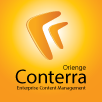Understanding the Importance of Agile ECM
The concept of Agile ECM (Enterprise Content Management) has emerged as a response to the challenges of our time. The promises of an Agile ECM system are: adaptation to a constantly changing business environment; support of new management styles and methods; and, maintaining control, having clarity, and regulating the execution of business processes and their performance. This article briefly examines the premises and structure of Agile ECM and why they are important to your company.
Agile ECM Premises
Every new phenomenon or paradigm has its own premises. Agile ECM also had its own. For more convention, the Agile ECM premises are divided into two groups: Business Environment Changes; and, the Changing Paradigm of Doing Business.
Business Environment Changes
One of the most important factors that has been changing the business landscape is increasing competition at every level of all markets. To some extent, this is due to ongoing globalization which fades borders between countries and opens national markets previously closed to foreign competitors. Globalization causes business process unification, which in turn, facilitates the entry of new multinational players to markets. Another feature of globalization is the growing professionalism of players. Market participants require a thorough knowledge of the market and the factors required to offer demanded products and services. Moreover, to make progress, competitors must be able to bring to market a revolutionary new product or service. Even to maintain current positions, companies should constantly improve their products and invest significantly in their own development.
The second factor facing a number of industries for market participants is very strict rules set by numerous regulators. Moreover, these demands are constantly growing. There are also universal rules (for example, for public companies or in taxation). There are some companies that undertake "higher obligation", seeking to meet the requirements that are not mandatory, but that show maturity and a high level of products or services (ISO standards, MoReq requirements, etc.).
The third factor, which can be named as external, is an increasing flow of information. Archives of companies are growing at twenty-five percent (25%) annually. The total growth amount of paper in the U.S. alone is more than four trillion (4,000,000,000,000) paper documents annually. This figure increased by eight hundred eighty billion (880 B) copies. Companies have to process, store, and manage more and more documents of more and more types. This not only increases the direct costs of managing information, but also complicates compliance and search for relevant information.
Thus, increased competition, the pressure of regulation & compliance, and the dramatic growth of information are just some of a variety of external factors of changing business conditions.
Changing Paradigm of Doing Business
The second group of premises for Agile ECM relates to changing the paradigm of doing business. Networks of employees, enthusiasts, and stakeholders grouped around the leaders come in place of hierarchical structures. This process affects large companies and transforms monolithic groups into small initiative teams that are connected to the vertical line through their heads. Teams can be created on an ongoing basis and for certain tasks. In the latter case, we are talking about project management style.
In addition to management style, character of interaction in the companies also has been changing. Due to a growing number of horizontal links and changes in internal communications, the company increasingly resembles a social network. In an environment initially designed for effective interaction, it is normal practice to set a task to any colleague including your line manager or even the CEO of the company.
Finally, another factor which is worth mentioning is the "mobilization" of corporations and their employees, enthusiasts, and stakeholders. More and more people work remotely (from home, on business trips, and from the branches scattered around the world) using all kinds of mobile devices. Responding to the challenge, companies create new communication channels that allow accessing corporate information systems from smartphones and tablets.
Thus, the major internal factors changing paradigms of doing business are: changes in management style and communication within the company and outside; widespread use of social technologies; and, the increasing mobility of workers.
Agile ECM Answering Calls
The changes caused by both influence of internal and external factors discussed above demand new requirements for enterprise information systems, especially for those that support business processes and provide their participants with information needed for decision making. ECM systems are core corporate systems that perform such tasks. The concept of Agile ECM has emerged as a response to the challenges of our time. ECM systems must: adapt to a constantly changing business environment; support new management styles and methods; and, maintain control, provide clarity, and regulate the execution of business processes and their performance.

There are several distinctive features typical of Agile ECM.
Flexible Business Processes Support
The main value of Agile ECM is the ability to quickly adapt the system to changing business processes. To survive in the competitive world, companies must respond to changing conditions of business and rebuild (or iterate) their business processes. Agile ECM allows companies to change business rules, to reconfigure the existing business process routes, or build a new efficient route without significant cost. This flexibility should be built into not only the architecture of the system, but also in its ideology.
Including Content into Business Processes
A recent study conducted by International Data Corporation (IDC) states that information workers spend up to fifty percent (50%) of their time searching for information. To improve efficiency, it is vital to reduce time spent finding relevant information. Ideally, all information should be available without a search. The novelty of Agile ECM is that ECM is no longer treated as a passive repository of documents. In Agile ECM, content is originally embedded into the business process.
Focus on Solving Business Tasks
Until now, a common misconception was that ECM systems were deployed to support administrative tasks such as registration of incoming and outgoing documents, organization of document repositories, etc. According to the concept of Agile ECM, ECM should be deployed to automate key business processes. This seriously expands the geographical scope of the project and changes project audiences from record keepers to information workers. An Agile ECM system becomes an infrastructure tool that provides effective work of employees, guarantees that business objectives will be addressed effectively, ensures that the company will receive an executive discipline monitoring/management tool, and will be able to keep the company competitive.
Rapid Application Development
An Agile ECM system is a platform for content-oriented application development. Nowadays more and more advanced users use ECM platform to build “lightweight” solutions which automate routine business tasks. Agile ECM allows developing ECM applications without considerable efforts and without involvement of the serious programming. This can be reached by providing powerful, and in the same time user friendly, configuration tools. Visual tools are used to build forms and reports supporting business processes. The developed ECM application should provide a simple and efficient access to the stored content at maximum performance and bring flexibility to business processes.
Rapid Deployment
Modern companies cannot afford lengthy information system deployment. Deployment lasting for many months can make the system implementation unprofitable. Agile ECM should allow rapid deployment and be subdivided into a number of more detailed requirements:
- The system should have intuitive user interface and clear system logic.
- Working with the system should not require expensive and lengthy user training.
- Complex actions in the system should be divided into simple understandable steps.
- The system should be delivered with online help and training materials.
In addition, the rapid system implementation is possible when a business solution is deployed. A business solution is a ready to deploy product combining technical solutions and consulting services aimed at solving quite a narrow task including, but not limited to, Meeting Management, HR Process Management, Contract management, Accounts Payable / Invoice Management solutions.
Support for Mobile and Remote Working
As it has been mentioned above, modern business reality is that more and more users now work remotely using both traditional computers and various mobile devices. Agile ECM should allow remote work via the Internet. Mobile user support means that the system should also have a mobile interface which “knows” about mobile devices screen resolution, limited speed, and traffic of mobile connections. There are two (2) primary and effective ways of mobile work: The first is mobile Web access; and, the second is mobile application development for different mobile operational systems. Mobile applications should allow mobile users to perform basic operations such as document review, basic workflow actions, and to work with specific reference data.
Summary
Agile ECM is a new stage in the development of ECM. ECM systems realizing the ideology of Agile ECM will: allow businesses to respond promptly to changes in business environment; adapt business processes to changing techniques and styles of management; and, successfully manage small project teams and large groups of enterprise users. Agile ECM helps companies to comply with strict regulatory requirements. In the same time, Agile ECM inherits all ECM system strong points such as control over business processes, predictability and clarity of their passage.

